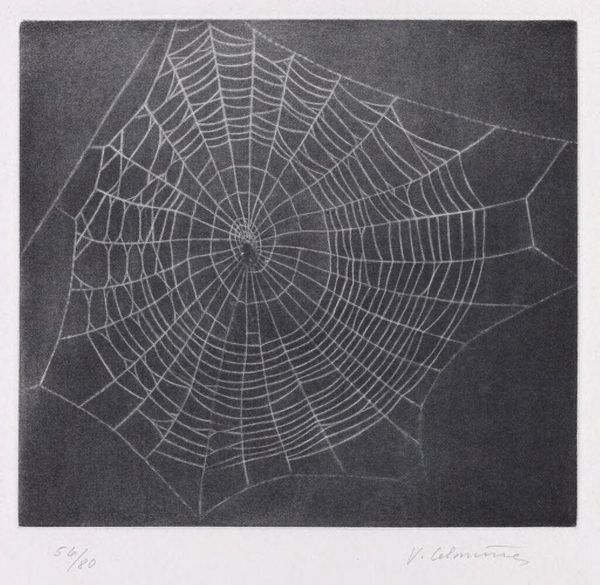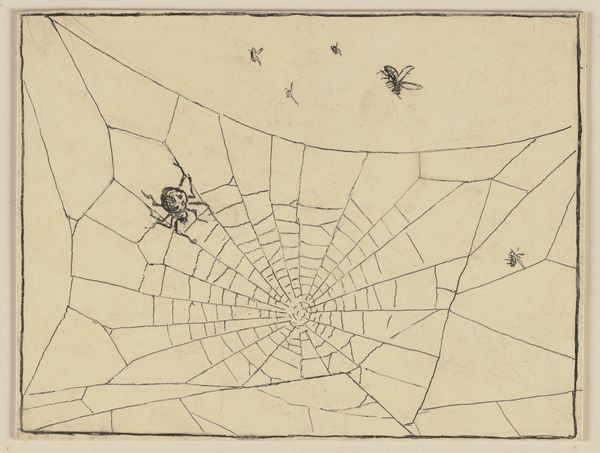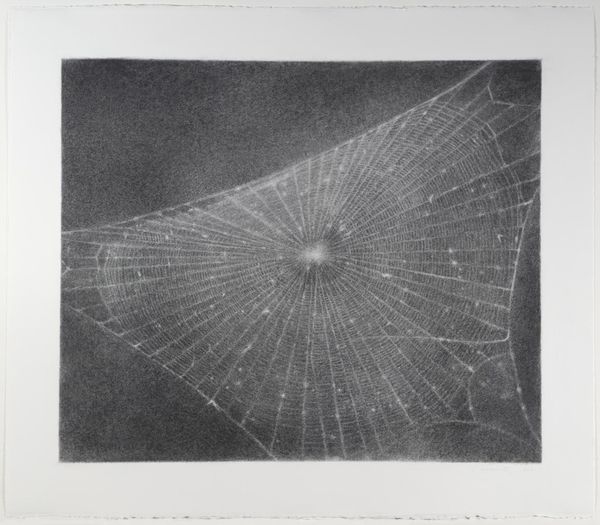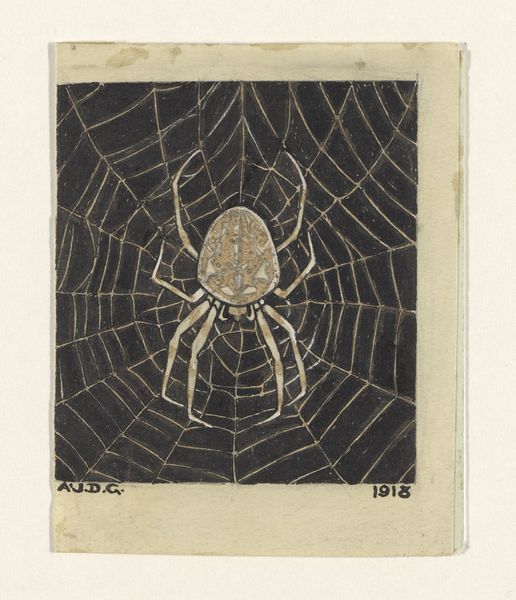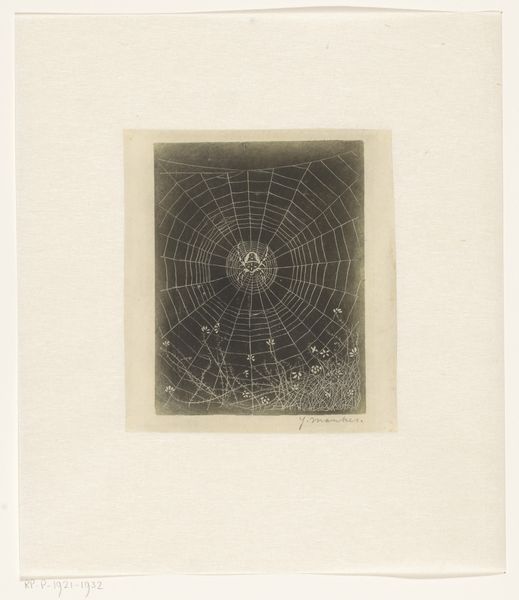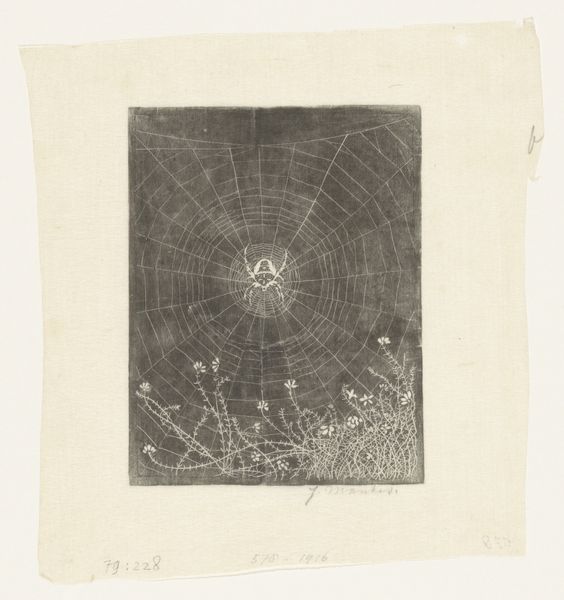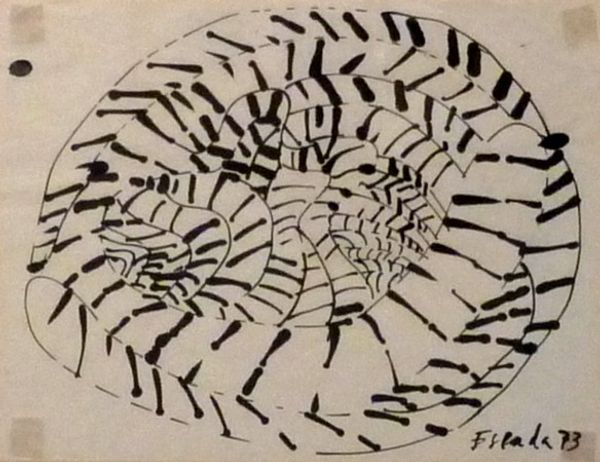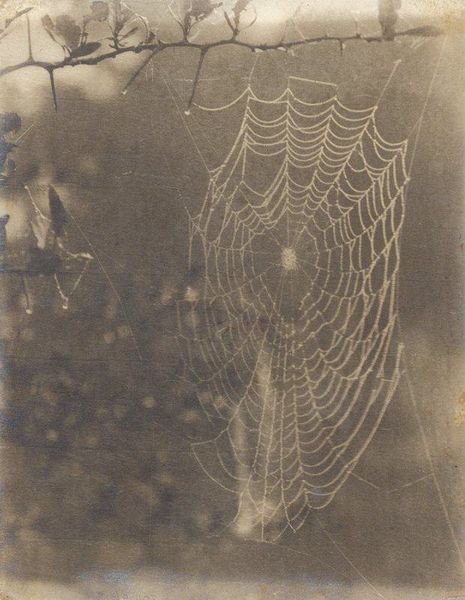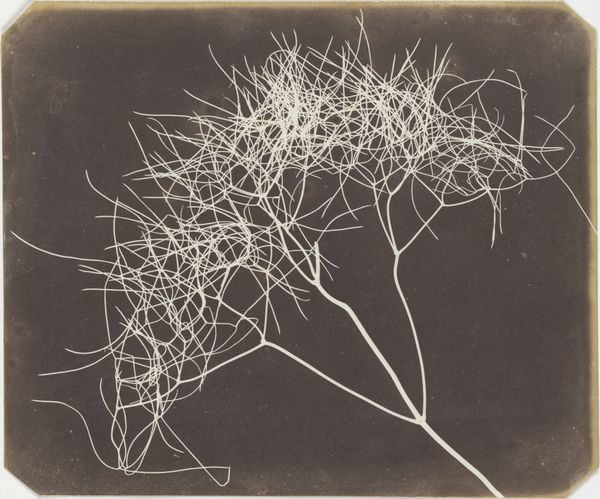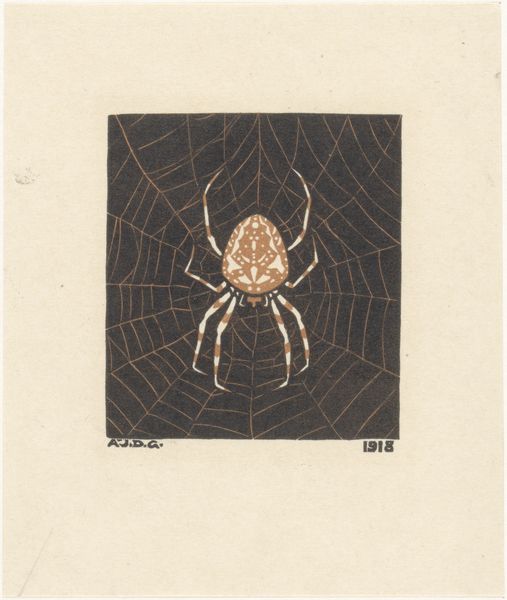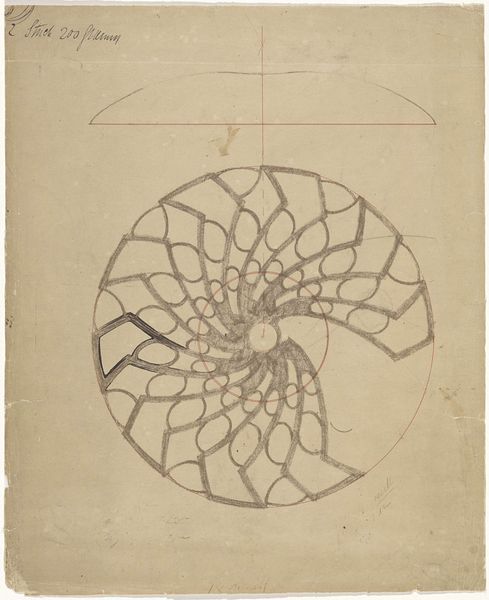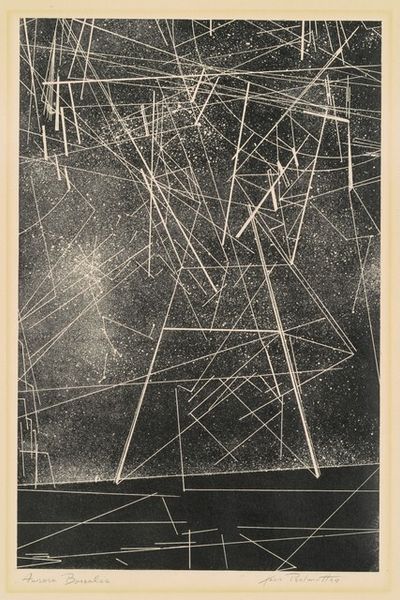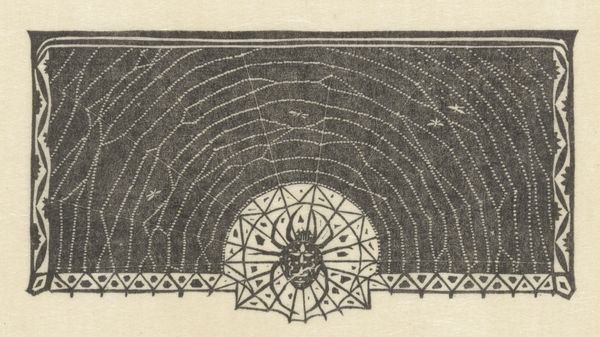
drawing, print, photography
#
drawing
#
organic
# print
#
organic shape
#
photography
#
line
#
monochrome
Copyright: Vija Celmins,Fair Use
Curator: Looking at Vija Celmins's "Untitled (Spider Web)" from 2000, it's difficult not to feel immediately drawn into its delicate yet imposing presence. Editor: Imposing is certainly a word I’d use. There’s something about the stark contrast of the white web against the dark ground that makes it feel both fragile and powerful. It’s visually striking. Curator: And what strikes me is how Celmins, working at a time of increased digital interference, directs us to question the nature of what’s “real.” The image, so meticulously rendered, compels viewers to look beyond the mere depiction of an organic object, pushing against our notions of photographic truth. Editor: Absolutely, the high contrast and restricted tonal range simplifies the scene while exaggerating the intricate lines that define the spiderweb, that create such a compelling and unsettling design. And there’s something about the seemingly limitless negative space around it that draws you into this graphic space. Curator: Right. It’s a rather loaded organic form, isn’t it? The spiderweb throughout history is associated with notions of death and vulnerability, and, paradoxically, of intricate labor. Consider how the act of portraying something so seemingly inconsequential—a spider web—elevates it, questioning the hierarchy of what subjects we deem worthy of representation. Editor: That interplay between vulnerability and craft is fascinating. The rendering, that intense linear articulation is meticulously descriptive, but abstracted enough to feel modern. Do you see a dialogue occurring between that representational aspect and the almost total design, the sheer abstract potential here? Curator: Indisputably, and Celmins had to carefully calibrate the political underpinnings of that decision. By committing to realism, she's implicitly signaling a desire to grapple with and disrupt the canon. In a way she’s pointing out the implicit social forces that encourage the underrepresentation within the visual field itself. Editor: It feels like the piece becomes more about the perception of an object than the object itself. What began for me as simply a fascinating design—the network of radial and spiral lines contrasting against a dark background—becomes this larger contemplation of observation. Curator: And isn’t that just indicative of Celmins’s capacity as an artist: she draws out profound complexities from these rather simple forms. Editor: Right, she transforms a common encounter into this rather haunting yet alluring invitation for sustained looking.
Comments
No comments
Be the first to comment and join the conversation on the ultimate creative platform.
